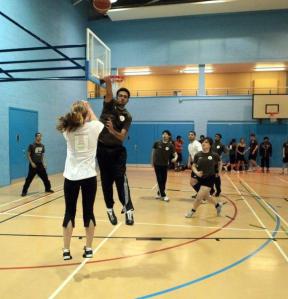– Sarah Oxford –
Modern sport, meaning the team-organised variety with “a set of strict, precise rules which needed to be respected everywhere in the same way, in spite of local conditions and features”, appeared in 19th Century England as a way to organise the masses during the transition to industrialisation and democracy (Bouzou, 89). Sport in the British colonies ensued and as such historians have argued that “sporting practices are historically produced, socially constructed, and culturally defined to serve the interests and needs of powerful groups in society (Bandya et al., 3).”
Since inception sport and the cash-cow elements of professional sport have been male-centric; however, because sport reaches all levels of society as a leisure activity, it naturally created (although grudgingly) a pathway to challenge gender norms. Oddly, it appears that due to modern circumstances, breakthroughs in gender stereotypes via sport happened less in the UK than in the USA.
The biggest surprise I’ve encountered as an American living in UK is the inherent sexism within sports. Besides Jessica Ennis, I rarely see women athletes in the media. Moreover, the idea of me as a footballer (regardless of awards or capability) is repeatedly questioned as if preposterous. My own co-ed football team (note: I was the only girl this year) even fit the bill offering perverse ‘compliments’ such as you’re good for a girl and Sarah’s basically a guy.
The backwards comments are disturbing, yet logical considering their role-models, such as Sir Bobby Charlton, are making similar delusional remarks. In reference to the British women’s football team, he said:
I have been watching women’s games on television and I have had to remind myself I am not watching the men. And I mean that as a compliment…
I need to do further research on feminist movements in Britain as I’m unclear what happened to allow this far-reaching male chauvinism in sport to exist in 2012. It’s especially ponderous because much theoretical debate about women and sport took place in GB and the First World Conference on Women and Sport took place in Brighton in 1994. More puzzling is that GB’s role in development and peace that I have seen here in East Africa includes top-down funding to socially inclusive sports programs. Fascinating hypocrisy?
This response to my first question, leads me ask:
Why did the USA move towards sports equity faster than the UK? Are there comparable laws like Title IX in other countries? Why is women’s football in USA, Japan, Germany and Brazil more advanced than other nations? Where is the impetus in the UK to fund women’s athletics in LMIC’s coming from? What is the importance of top-down legislation compared to grassroots efforts when it comes to developing a culture of acceptance and equality in sport? Does inclusion of women in sport create pathways for increased female participation in education, business, government? And if so, does social inclusion in sport lead to a more peaceful society?
Works Cited
Bouzou, Joel (2010): Peace Through Sport: When Myth Becomes Reality. Armand Colin/ IRIS, Paris.
Susan J. Bandya, Gigliola Gorib & Dong Jinxiac (2012): From Women and Sport to Gender and Sport: Transnational, Transdisciplinary, and Intersectional Perspectives, The International Journal of the History of Sport, 29:5, 667-674













